© ROOT-NATION.com - Use of content is permitted with a backlink.
Western partners continue to supply the Armed Forces of Ukraine with the latest weapons and are drawing up plans for new deliveries. Recently, it became known that Ukraine will receive modern Joint Direct Attack Munition (JDAM) equipment from the United States and its allies, which transforms conventional bombs into all-weather, precision air-to-ground weapons. The acquisition of JDAM would mean completely new opportunities for the Ukrainian Air Force to destroy enemy targets on the ground with high precision, while providing some protection for the carrier aircraft.
Read also:Weapon of Ukrainian Victory: German Self-Propelled Howitzer Boxer RCH 155
What is known about the supply of Joint Direct Attack Munitions (JDAM)
On December 14, The Washington Post reported on the new plans of the US government. The journalists learned from several unnamed high-ranking sources that President Joe Biden’s administration was studying the possibility of providing Ukraine with JDAM (Joint Direct Attack Munition) kits. At that time, the final decision to send JDAM equipment had not yet been made.

The technical details of the possible assistance are also unknown. For example, The Washington Post did not indicate whether the equipment could be used in aircraft or ground-based systems. It was also not reported in what form these kits could be provided, whether independently or as part of ready-made bombs. If the US provides only kits, it is unclear what Ukrainian ammunition they can be used with. So far, no details are available.
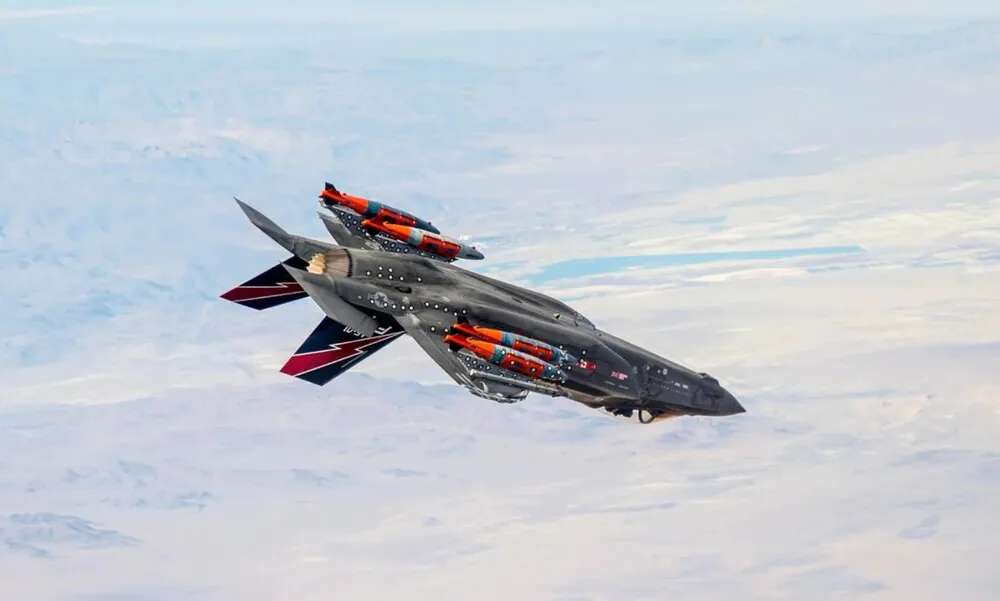
In the context of obtaining and deploying new weapons, The Washington Post recalled the problems of Ukraine’s combat aviation. It is equipped only with old Soviet-made aircraft, which imposes certain limitations. Recently, the Pentagon has been looking for ways to modernize this equipment. At the same time, it has actually abandoned plans to provide Ukraine with modern foreign aircraft, which requires retraining of flight and technical personnel and modernization of airfields.
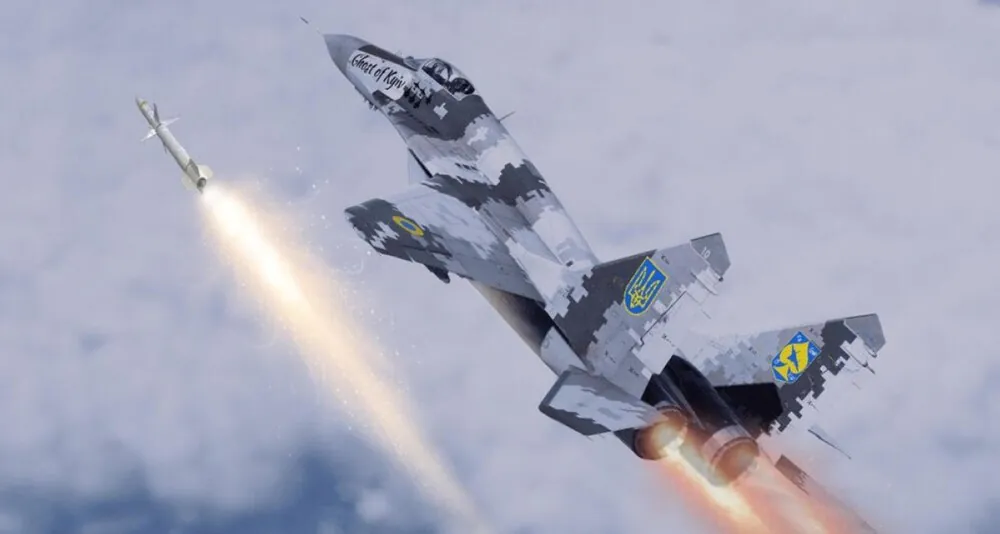
However, some Western experts believe that an important factor in the possibility of using JDAM with aircraft such as MiG-29, Su-25, Su-24, and Su-27 is that the coordinates of the target can be prefixed to the bomb on the ground. This eliminates the need for a complete modernization of the aircraft’s entire avionics and the integration of a guidance module. This is a strong argument for the supply of high-precision JDAM weapons, which turn unguided aerial munitions into “smart bombs.” The JDAM kit contains wings that are attached to the middle part of the bomb and a tail unit that has controllable feathers that allow the bomb to maneuver, as well as a computer with navigation equipment. This kit is combined with an existing bomb casing, which is usually a variant or derivative of the widely used Mk 80 series of weapons.
Read also: Weapons of Ukrainian Victory: German Gepard Self-Propelled AA Gun
Why the JDAM smart bomb project is interesting
The Joint Direct Attack Munition (JDAM) is a low-cost gravity bomb guidance system manufactured by Boeing. It transforms existing unguided general-purpose bombs into smart, precision-guided weapons. The JDAM can be launched from a distance of more than 28 km from the target and receive updates from US Air Force GPS satellites, which helps to accurately guide the weapon to the target. Boeing manufactures JDAM equipment at the company’s plant in St. Charles, Missouri.
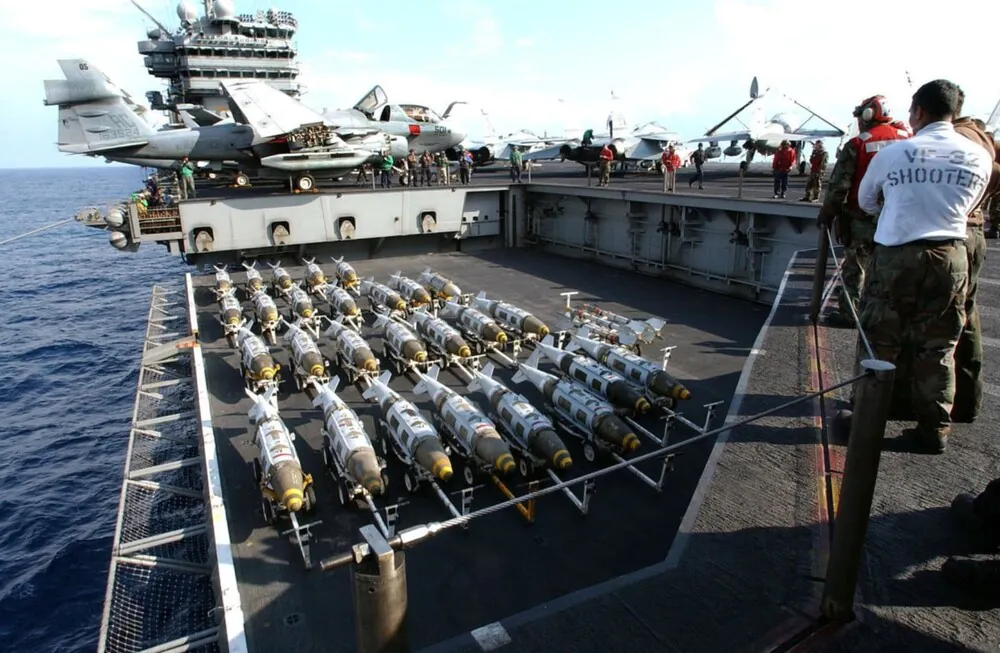
The JDAM guidance kit uses 2000-pound BLU-109/Mk 84 (GBU-31 JDAM), 1000-pound BLU-110/Mk 83 (GBU-32 JDAM) or 500-pound BLU-111/Mk 82 (GBU-38 JDAM) warheads as payloads. The US Air Force is developing a new modernized version of the BLU-137 penetrator to replace the BLU-109. This new warhead utilizes a modified hard-shelled JDAM tail assembly that includes a weapon-grade generator relocation adapter (AGRA). The JDAM allows the use of precision air-to-ground weapons against static and moving targets from fighters and bombers. Guidance is provided by a tail control system and a GPS-enabled inertial navigation system (INS). The navigation system is initialized by a tuning transmission from the aircraft, which provides position and velocity vectors from the aircraft systems. The tether straps provide additional stability and lift.
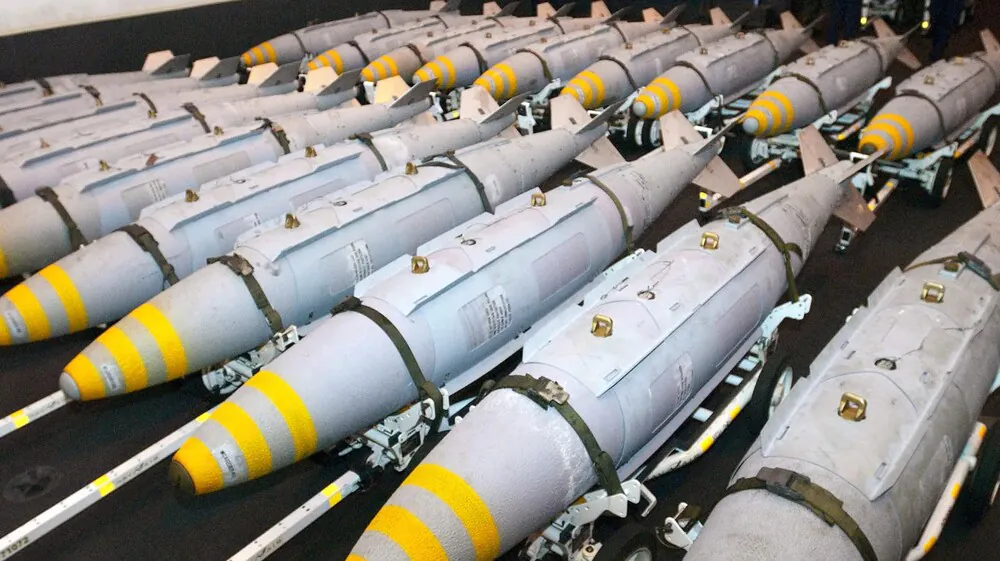
After launching from the aircraft, the JDAM projectile autonomously travels to the specified target coordinates. Target coordinates can be downloaded before takeoff, manually changed by the crew just before launch, or automatically entered via targeting using the aircraft’s onboard sensors. In its most accurate mode, the JDAM system will provide a probable circular error (CEP) of 16.4 feet (5.0 m) or less during free flight when GPS data is available. If GPS data is not available, the possible CEP is up to 98 feet (30.0 m) or less with a free flight duration of up to 100 seconds. The JDAM can be launched from very low and very high altitudes, both during straight and horizontal flight, as well as during maneuvering of the aircraft – climbing, rolling, diving.
Read also: Weapons of Ukrainian Victory: Iris-T SLM for Ukraine from Germany
Modern technologies of “smart bombs” JDAM
The JDAM project has been under development since the early 90s. Its goal was to create a new bomb for tactical aircraft capable of hitting targets at any time and in any weather conditions. Several variants with different control methods were considered, and as a result, the most successful was the guidance based on GPS data, implemented in a joint project of several companies. Testing of the first smart bombs of this kind began in 1993.
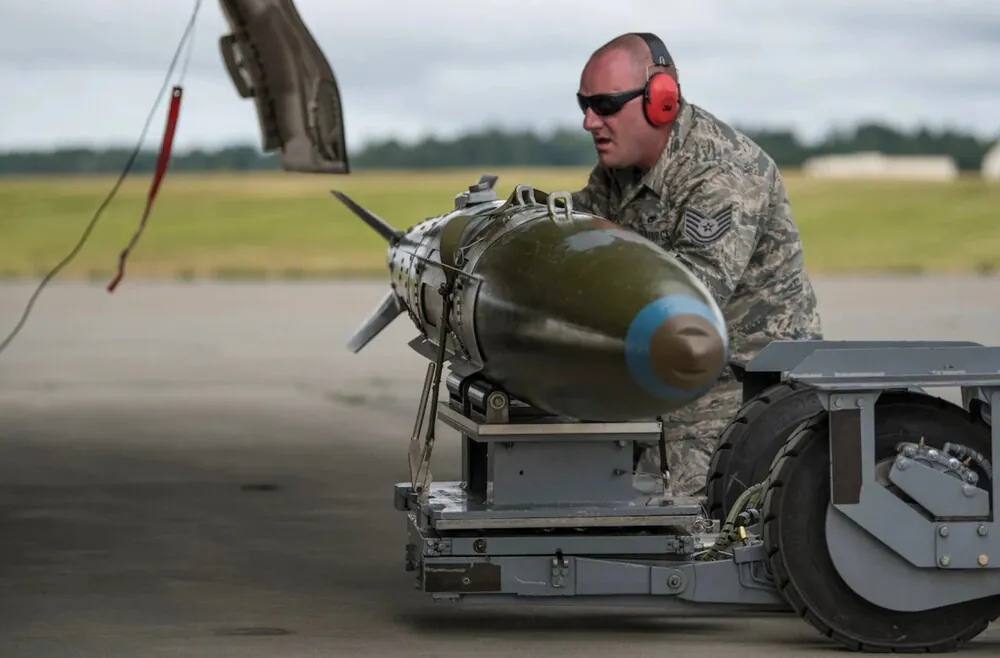
For some time now, the JDAM project has been developing a special set of tools to be installed on an existing unguided bomb. With its help, the latter was supposed to be transformed into a guided weapon. JDAM systems of this kind appeared in 1997 and subsequently passed all the necessary tests, including at the Pentagon’s military training grounds.
At the end of the 20th century, the JDAM kit made it possible to create several new guided bombs of various calibers. These munitions were put into service with the tactical aviation of the US Air Force and Navy. Later, foreign orders were received from a total of 30 countries. The famous Boeing Company is engaged in the production of the kits and assembly of bombs with them.
In 2000, the original JDAM kit was supplemented with a laser homing head. This version, called LJDAM, went into production and was supplied to various customers. Other guidance methods were also developed, including radar.
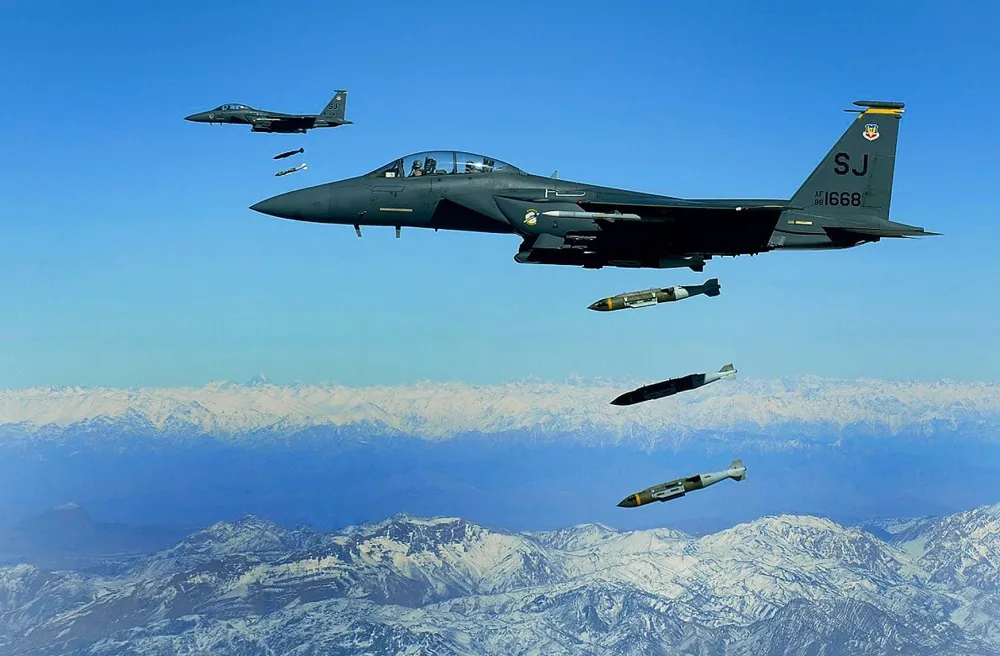
Since the early 2000s, JDAM bombs have been regularly used in various military operations conducted by the United States and other foreign countries. They quickly became one of the main weapons used by tactical aviation. This was facilitated by a favorable combination of tactical and technical characteristics, ease of use, and a fairly low price. Thus, in recent contracts, the cost of the kit was brought down to $21-22 thousand.
It should be noted that not only Boeing is developing smart bombs. There is a whole group of companies working here, including Honeywell (inertial measurement unit), Rockwell Collins (GPS receiver), Textron (tail drive subsystem), Lockheed Martin Corporation (mission computer), Lockely (tail fairing), Enser and Eagle-Picher (battery) and Stremel (rails and cables).
Since Boeing began production of the JDAM in 1998, many thousands of guidance systems have been delivered. On August 20, 2013, Boeing announced the production of its 250,000th JDAM.

In September 2012, Boeing announced that full-scale production of a new JDAM variant, the GBU-54 500-pound laser JDAM, had begun. Boeing delivered the first production laser kits to the U.S. military in 2008, and the Air Force deployed them in combat the same year.
Boeing is now developing and testing a variant of the JDAM Extended Range, or JDAM ER, which includes a low-cost wing and extends the range of the JDAM to more than 40 miles (64 km). The Royal Australian Air Force was the first customer to order the JDAM ER from Boeing in 2011. On March 13, 2013, Boeing announced the selection of Australian company Ferra Engineering to manufacture the wing kits for the JDAM ER.
Read also: Weapon of Ukrainian victory: GLSDB ground-launched bomb review
Bomb kit
The JDAM is a set of equipment and devices for installation on an unguided aerial bomb of the US type. A suspension device with connectors for the weapon control system and small wings are mounted on the munition body. The standard bomb shank with a stabilizer is replaced by a new instrument compartment. The LJDAM modification also uses a small nose housing with a laser homing head.

The main element of the JDAM kit is the tail housing, which serves as the instrument compartment. It houses satellite navigation devices, autopilot and steering mechanisms. Outside, the compartment is equipped with x-shaped stabilizers with rudders.

The principle of operation of the JDAM bomb is quite simple, and in this respect it does not differ from other, more complex guided bombs. Before the bomb is dropped, the automated system receives the coordinates of the target from the carrier aircraft. Then the bomb flies independently, during which the autopilot monitors the trajectory and corrects it if necessary. During tests and actual use, bombs with the JDAM kit showed a possible error rate of up to 7-10 meters.
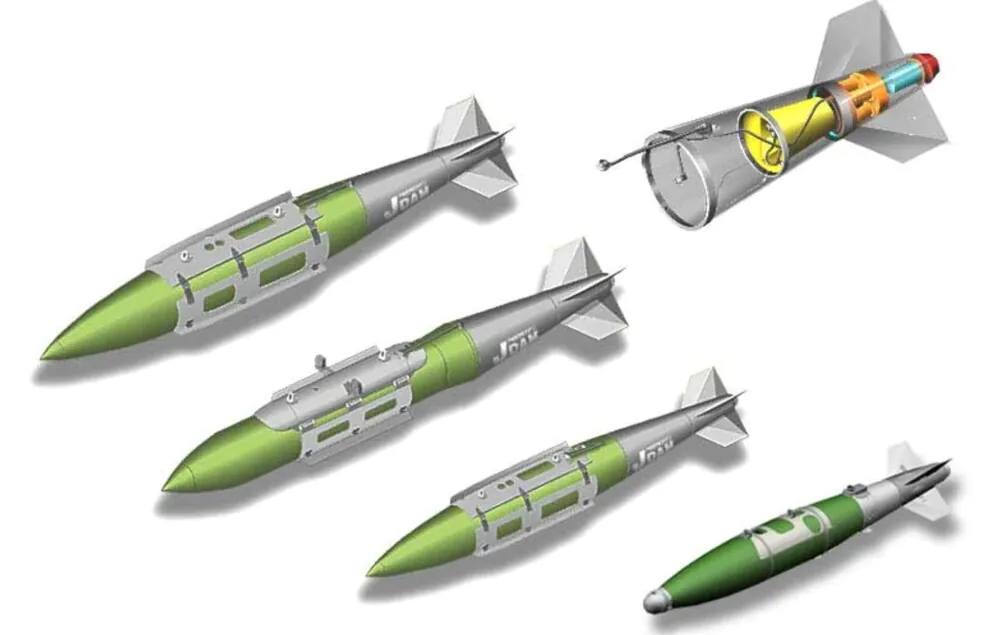
A whole family of JDAM munitions of various calibers was created on the basis of available unguided bombs. For example, several versions of the GBU-38 JDAM were developed on the basis of the 500-pound free-fall Mk 82, BLU-111, and BLU-126. The larger 1,000-pound GBU-32 is manufactured on the basis of the Mk 83 and BLU-110 bodies. The maximum caliber of the family is the 2000-pound GBU-31 bomb based on Mk 84, BLU-109 and BLU-119.
JDAM munitions are used by all major US tactical and strategic aircraft. Depending on the speed and altitude of the carrier, they can hit targets at a distance of up to 25-28 km. The possibility of increasing the range by installing a folding wing was being considered.
Read also: Weapons of Ukrainian Victory: Aspide Anti-Aircraft Missile System
Will there be any problems with integration?
JDAM kits and bombs based on them are of obvious interest to the Ukrainian Air Force. Of course, we want to receive modern foreign weapons that demonstrate and confirm high performance in combat. However, for obvious reasons, our aircraft will not be able to utilize the full potential of American bombs. Various problems with the integration of such weapons will prevent this.
American sources do not say what products can be supplied to us, but it is already clear that there will be problems with component compatibility. For example, if we receive ready-made GBU-31/32/38 bombs, we will have to modify the aircraft’s beam holders to fit NATO mounts. If the supply is limited to the tail instrument compartments, the task will be more difficult. They will have to be somehow combined with Soviet-style bomb casings. Whether this can be done without creating new problems remains to be seen.
It should be noted that compatibility with the carrier aircraft is determined not only by the configuration of the holders and locks. Instrumentation is much more important. Ukrainian Air Force aircraft do not have devices for interacting with JDAM and entering commands. Installing such devices on a Soviet-era aircraft seems to be a difficult task, to say the least. But for some reason, we are confident that our military technicians will cope with this task. And the fact that the aircraft of the Ukrainian Air Force can be compatible with Western weapons is demonstrated by the successful use of the same AGM-88 HARM.
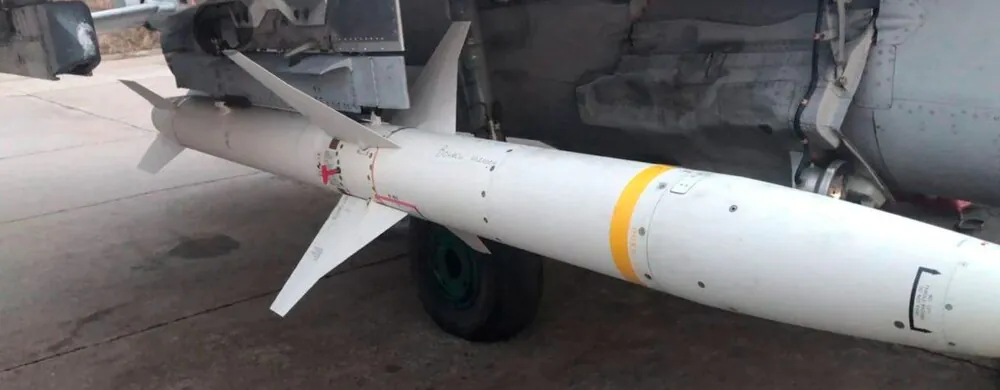
Without such equipment, the bomb’s automation will have to be programmed on the ground before departure, which will severely limit combat capabilities. Because of this, JDAM bombs, even under ideal conditions, can only be used against stationary targets with known and unchanging coordinates. The carrier will not be able to find the target, determine its coordinates and deliver an accurate strike on its own.
The combat use of outdated aircraft with modern bombs is associated with serious risks. A JDAM munition can fly no more than 25-28 km, which will bring the carrier into the range of short- or medium-range air defense systems before it is dropped. At the same time, it will be detected and escorted long before it reaches the point of discharge. That is, it raises the question of the survivability of JDAM bombs in a modern armed conflict. It is quite possible that Russian air defense will be able to detect and hit both carrier aircraft and dropped guided bombs. Intercepts of more complex targets have already been demonstrated in the course of hostilities.

But I am confident that receiving JDAM kits or bombs with similar equipment will have a significant impact on the real combat capabilities of the Ukrainian Air Force. Our Air Force will be able to realize the full potential of such weapons. In addition, the Russians have not yet encountered such weapons, and their appearance in the combat zone will allow them to gain a certain air superiority, which is sometimes really lacking.
Now, in the face of fierce fighting with the occupiers, every precision projectile, every combat vehicle, every air defense system is extremely necessary for us, so I would like to sincerely thank our Western friends and partners for their help and support. The invaders will not escape from retribution. Glory to Ukraine! Death to the enemies! Glory to the Armed Forces of Ukraine!
Read also:
- Silent killers of modern warfare: most dangerous military UAVs
- All about the General Atomics MQ-9 Reaper
- Weapons of Ukrainian victory: ATGM Stugna-P – Russian tanks are in trouble

